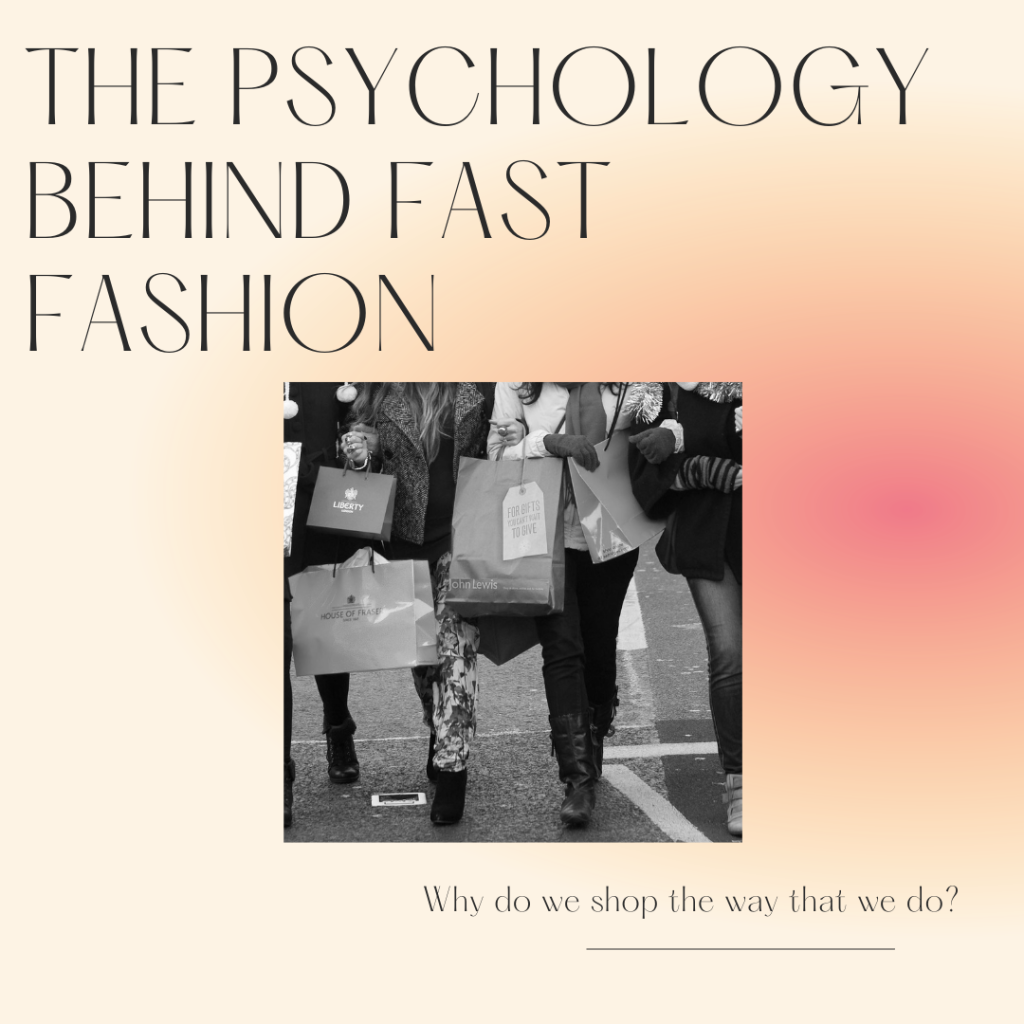
Hi everyone,
I think it’s important to consider the psychology behind fast fashion because it’s a phenomenon that is ultimately driven by consumer behavior. It’s fascinating for me to look at why people shop the way that they do, and I hope this post will be informative for you to understand the purchasing decisions behind some individuals.
One of the most obvious reasons why people shop in the first place is because it’s a fun activity to partake in and can be done from anywhere. Around 70% of men and women say that shopping is a form of entertainment for them. In the past, we would have to go to a mall or shopping center to shop, but in our current digital age, we can browse what’s new and trending from our phones. Overconsumption is even more prevalent with online shopping because we can order an item online whenever we want it. We may not have it immediately and physically in our hands, but we get the satisfaction of knowing it’s on its way and will be here soon. I don’t know about all of you, but I personally fall victim to browsing what’s new online when I get bored and have had to really rethink purchases and ask myself if it’s necessary. Social media is also a driving factor for buying fast fashion. Today, social media sites like Instagram add “shopping” tabs where you can see where products are from and purchase them directly through the app. This further fuels how easy and fast it is to purchase.
Influencers also play a big role when it comes to shopping. When large creators share their favorite items and recommendations, more people go out and buy those products. According to an article from Earth Day, there’s a positive correlation between the amount of influencers followed and consumption habits. This means that those who follow more influencers are more likely to be the ones engaging with fast fashion. Additionally, a lot of content creators have brand deals with fast fashion companies. Not only does this encourage their audience to shop from these stores, but it also increases the sales of these detrimental companies.
Convenient prices are also another driving force when it comes to shopping. Much of fast fashion is sold for a relatively cheap cost, and when we see the low price tags, we are more likely to buy it. In a way, we justify the purchase because of how cheap it is. However, we need to recognize that these purchases add up and we are continuing to feed the fast fashion cycle by ultimately having to replace the items shortly after they were bought.
Lastly, people shop because they get scared that they will be missing out if they do not purchase a trend. A lot of people refer to this as FOMO (the fear of missing out), and it really translates to purchasing goods. Just like all other trends, a lot of consumers want to be cool and socially accepted, so they choose to spend their money on these trendy pieces. However, these pieces end up only lasting a short amount of time given their life cycle, and soon, people end up with more items that are no longer trendy and functional.
Fast fashion may seem like a relatively simple business, but the psychology behind why consumers act the way they do is important to consider when we see people getting stuck in the fast fashion cycle. If you have questions or need links, leave a comment below, and I’ll be happy to answer or redirect you.
-Emily Berrol